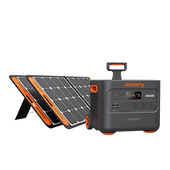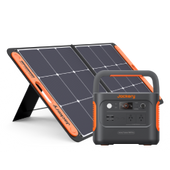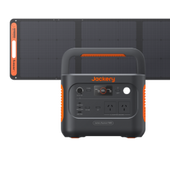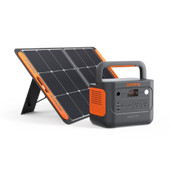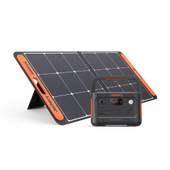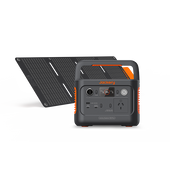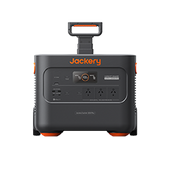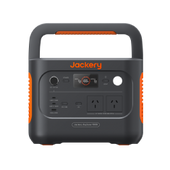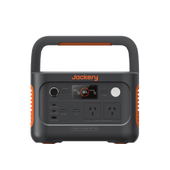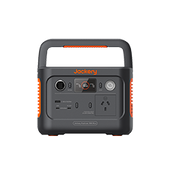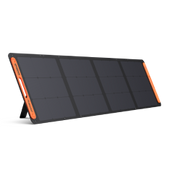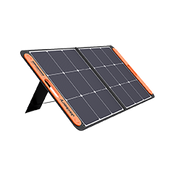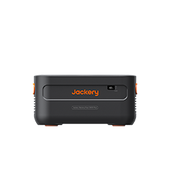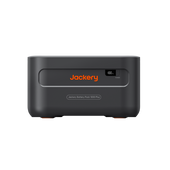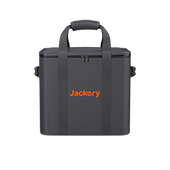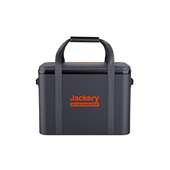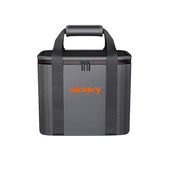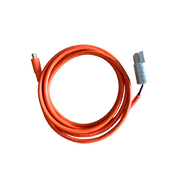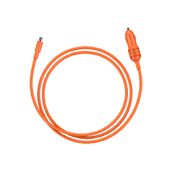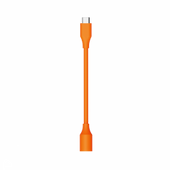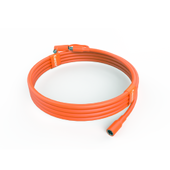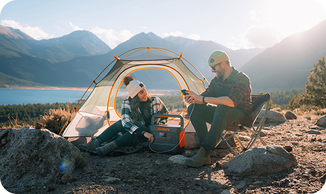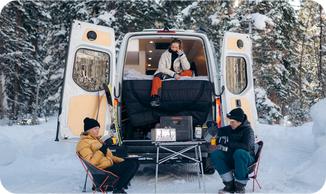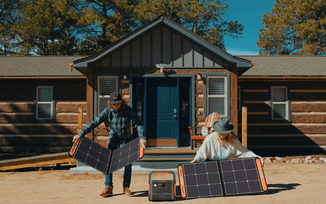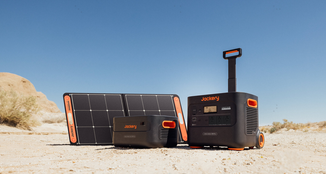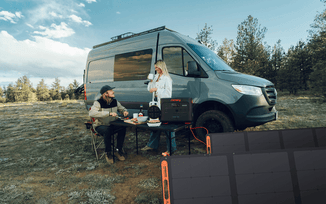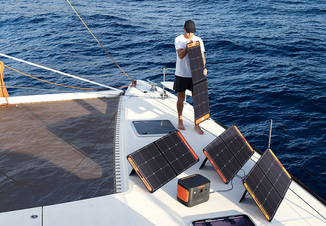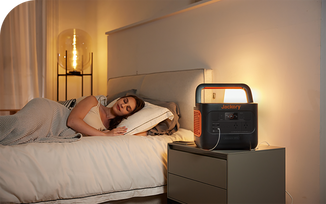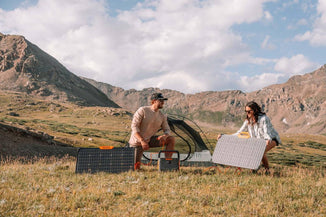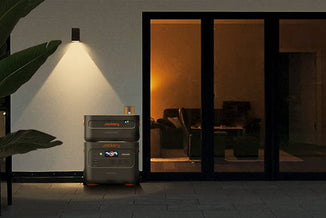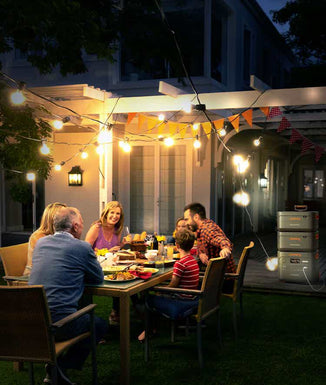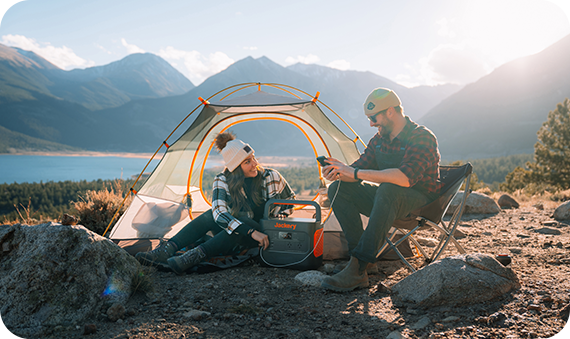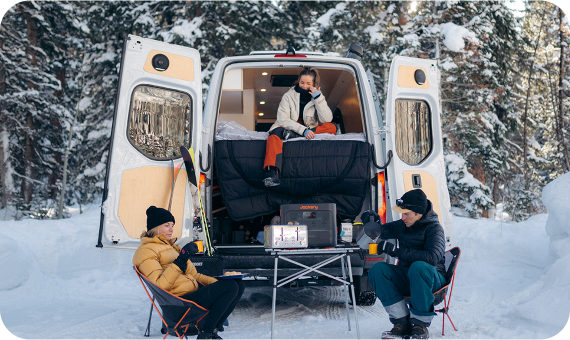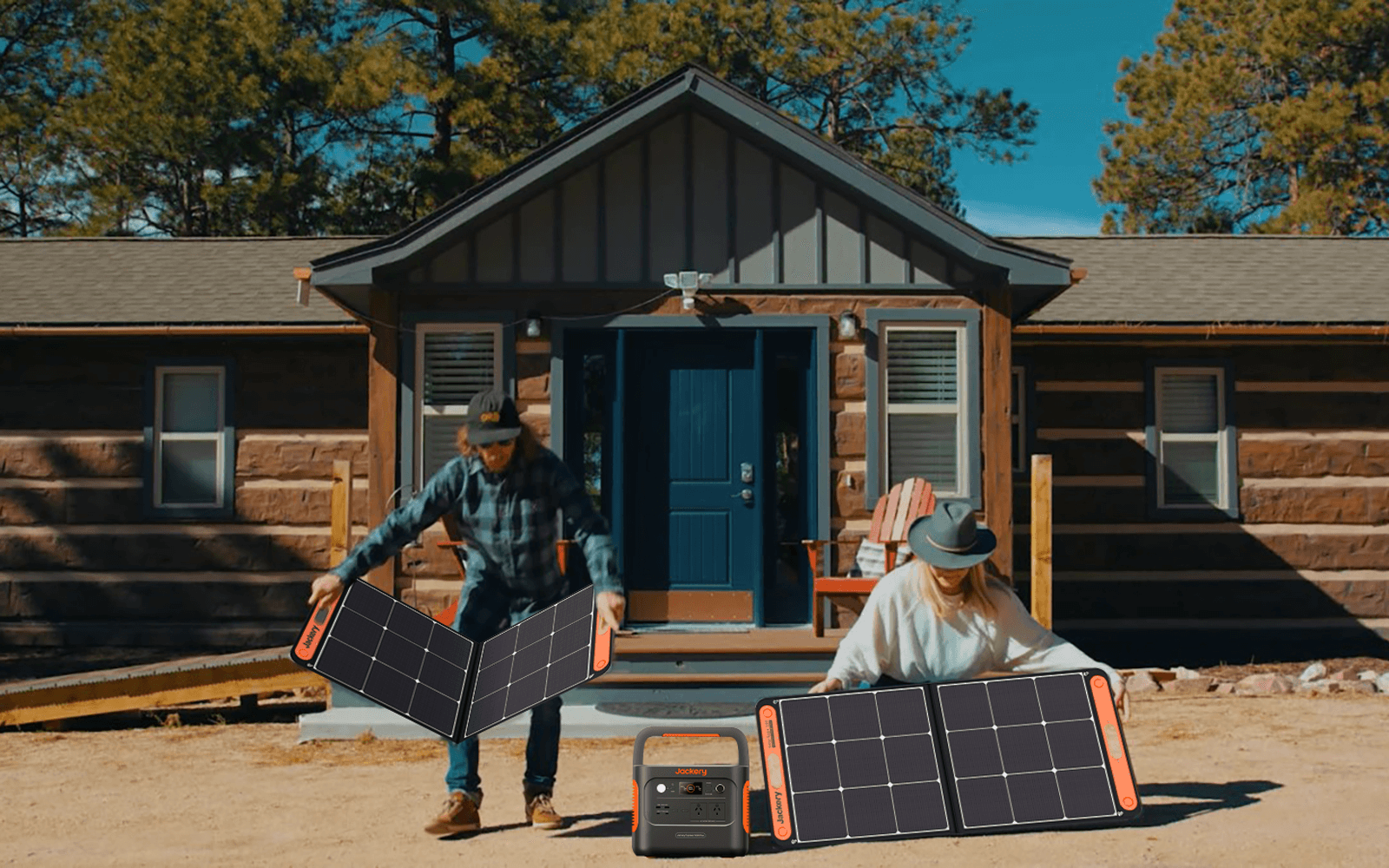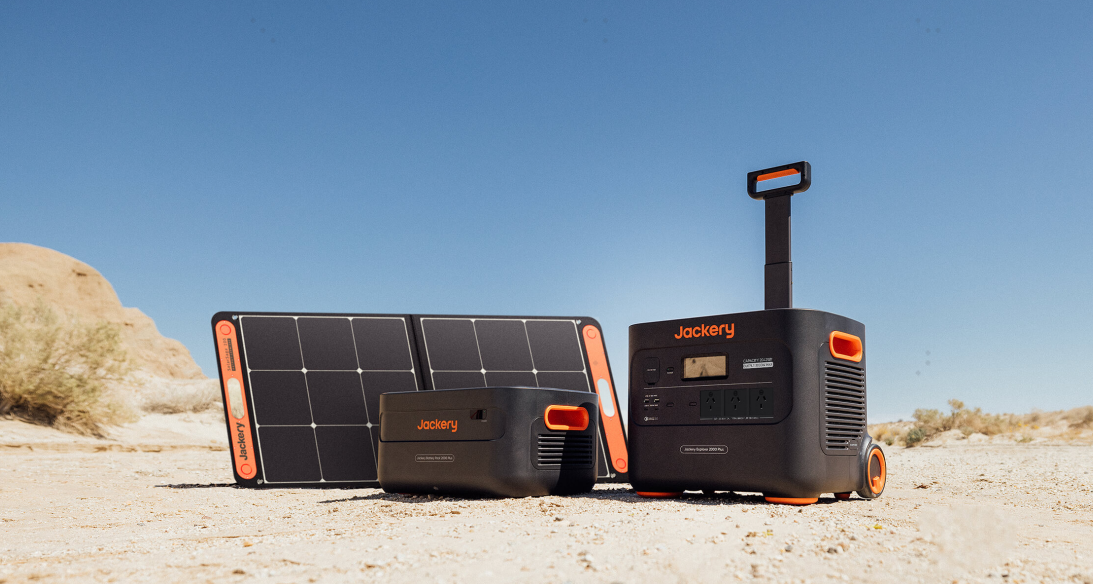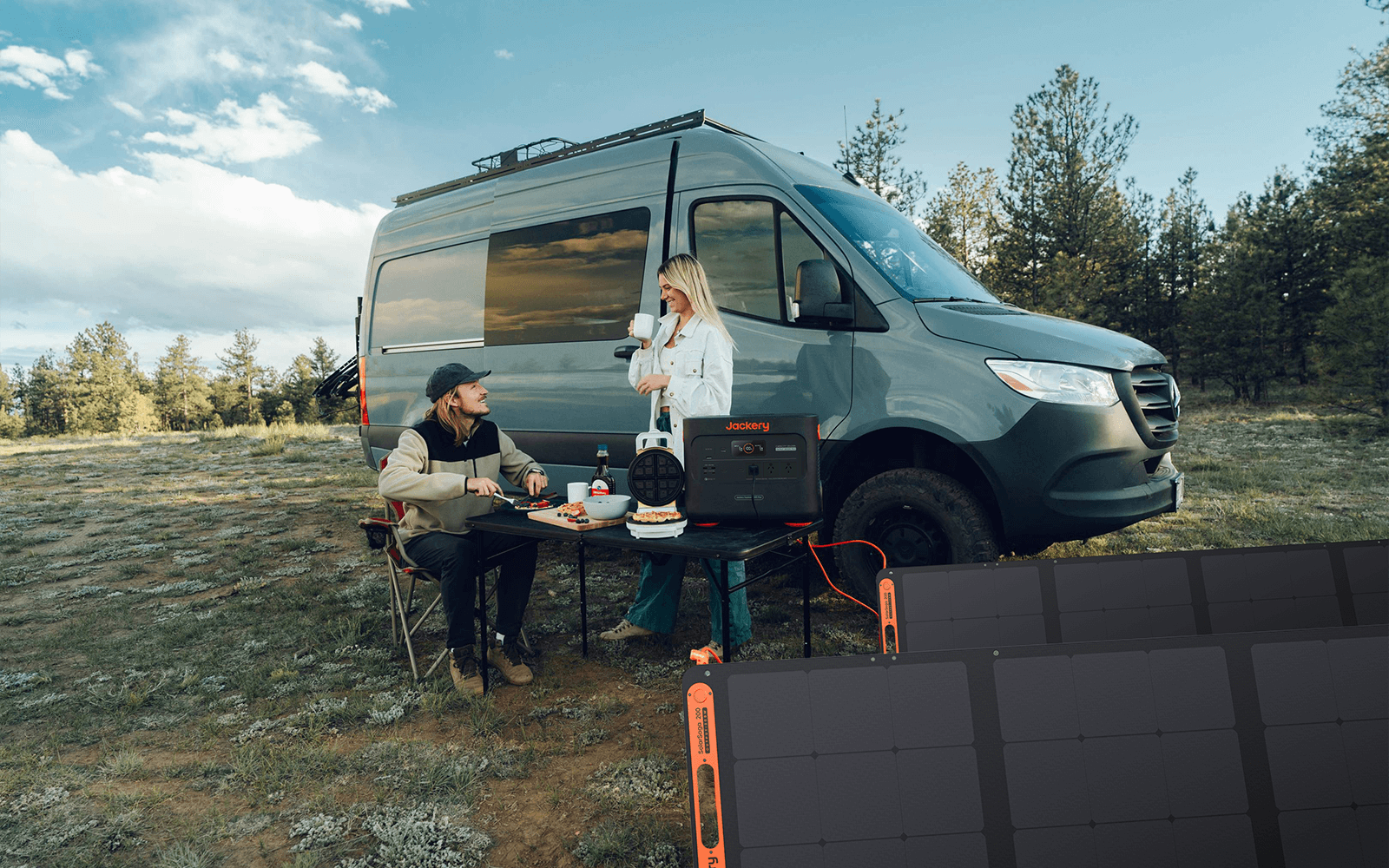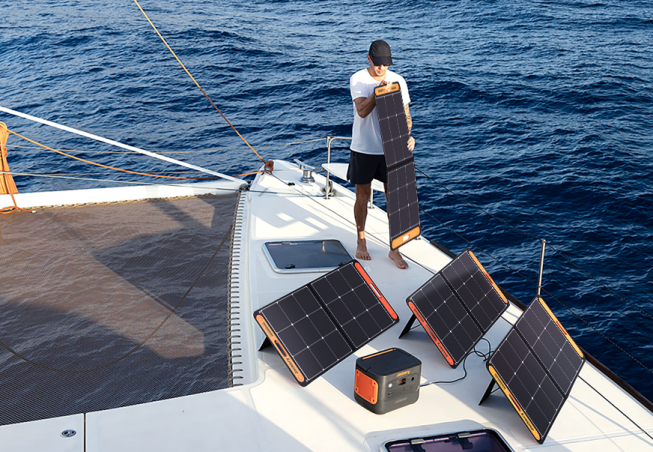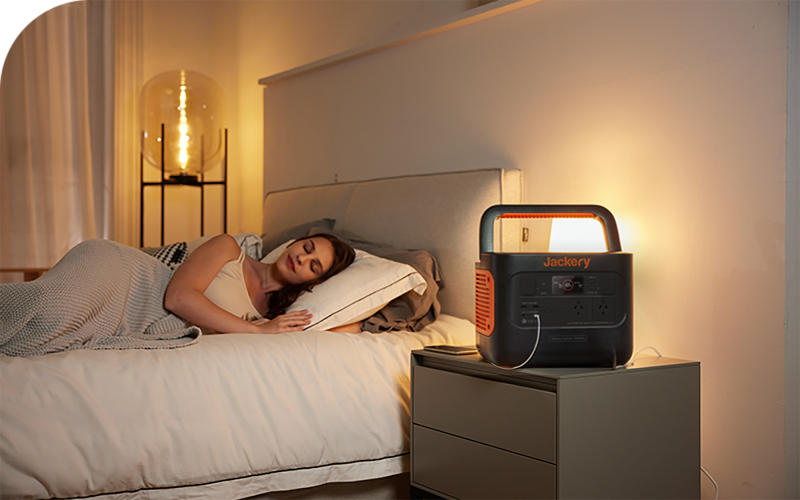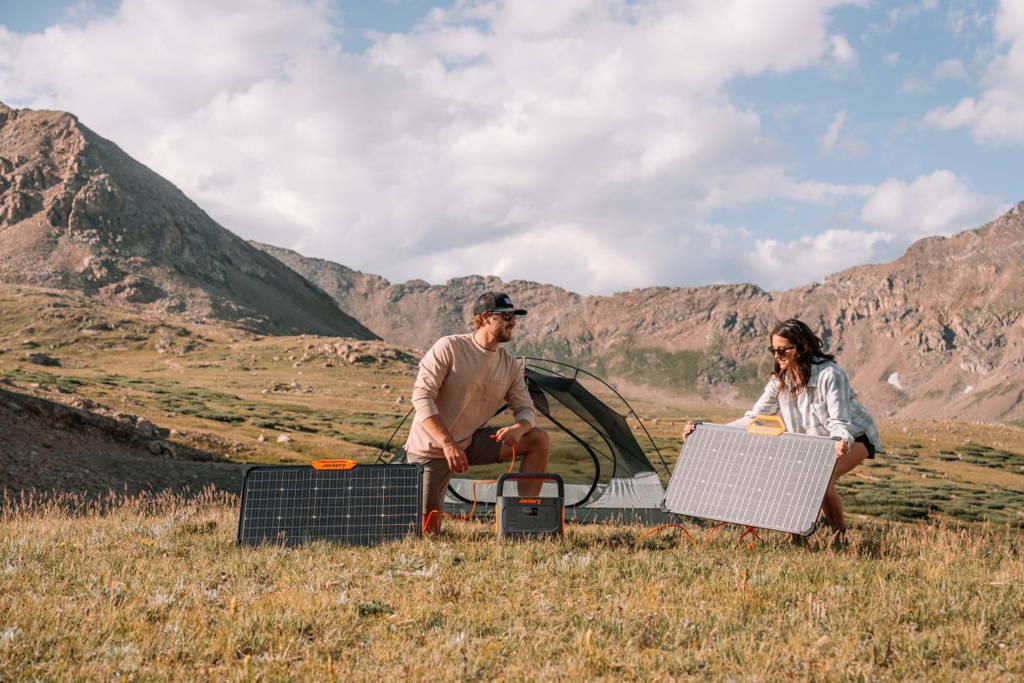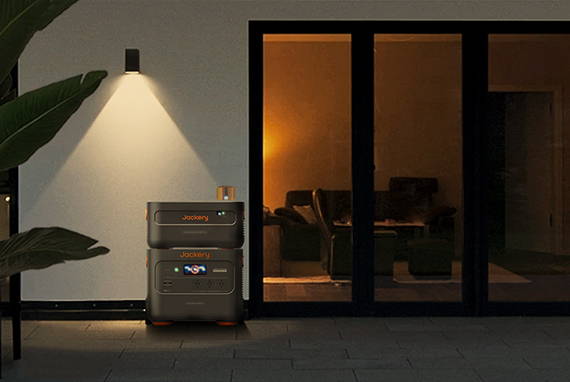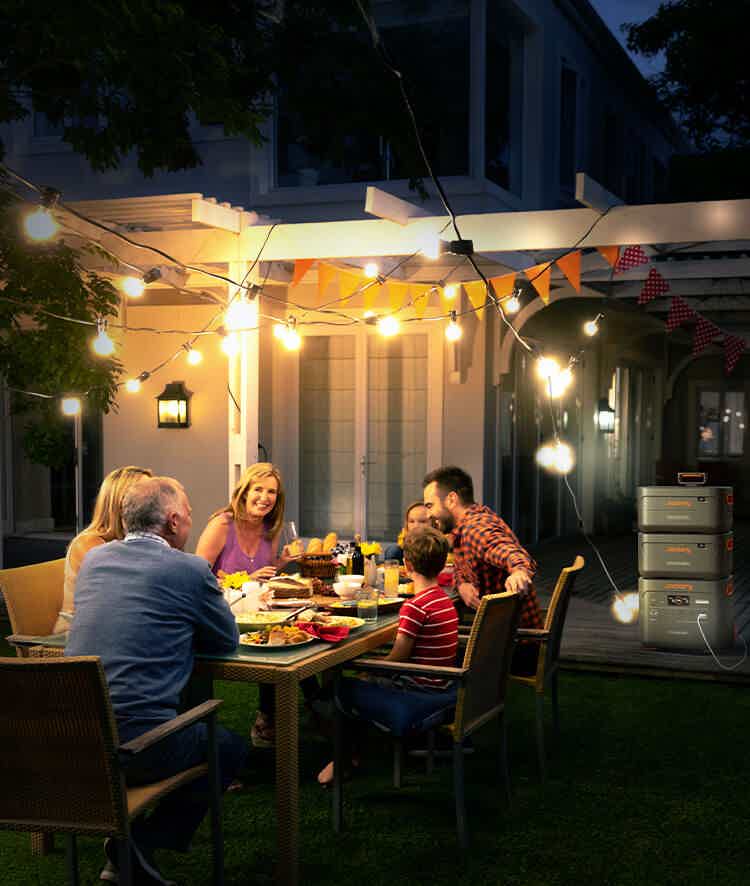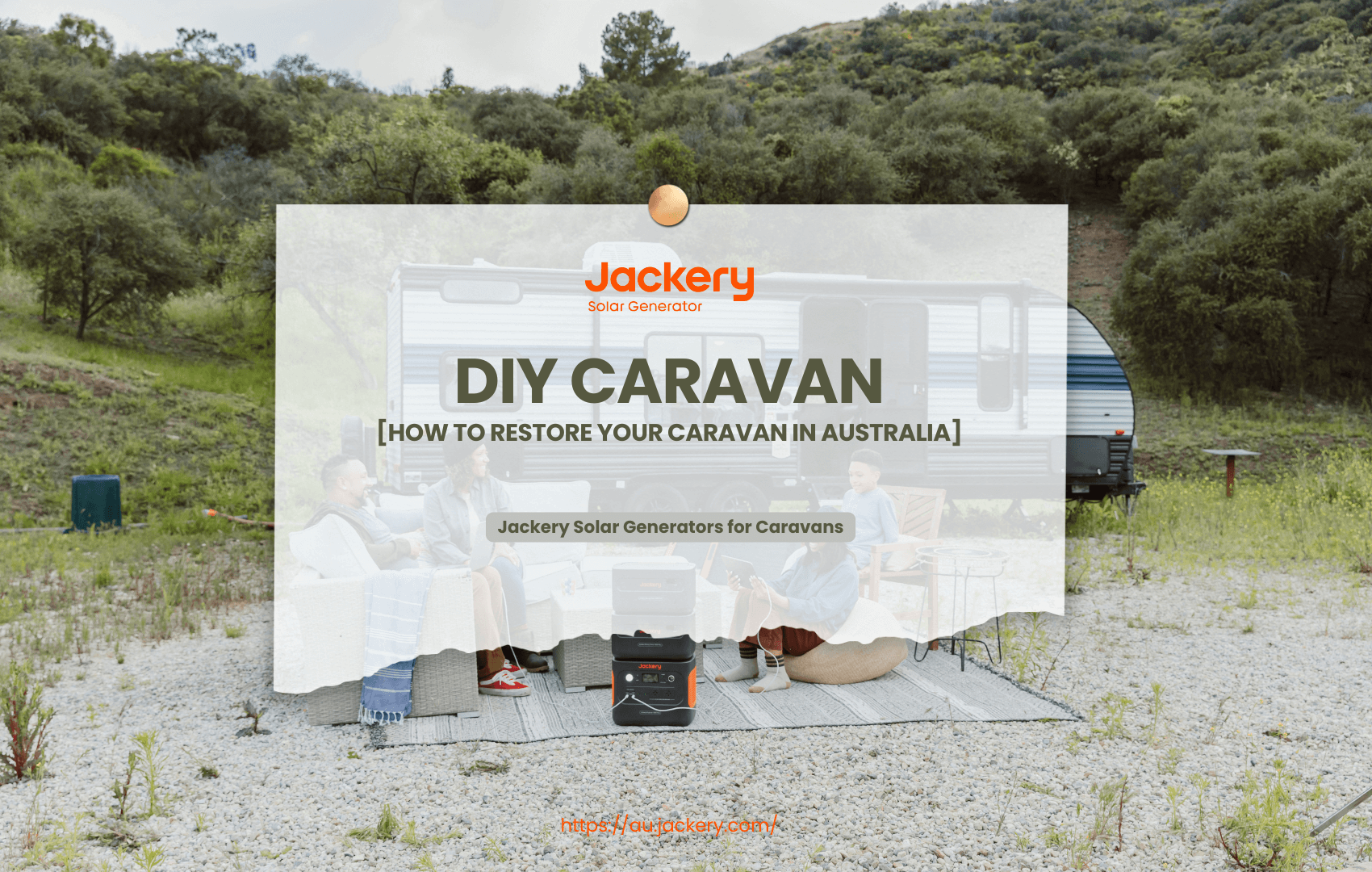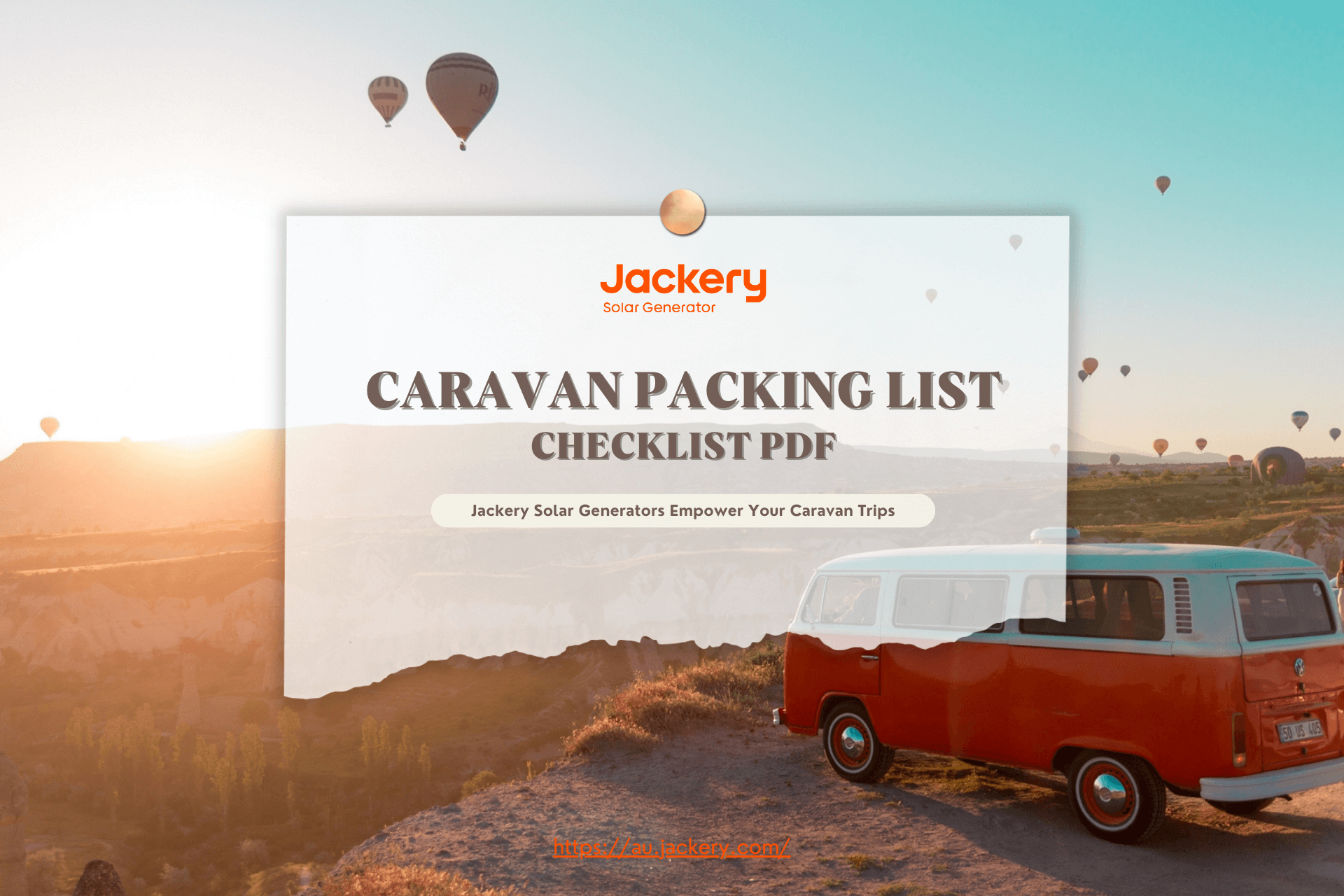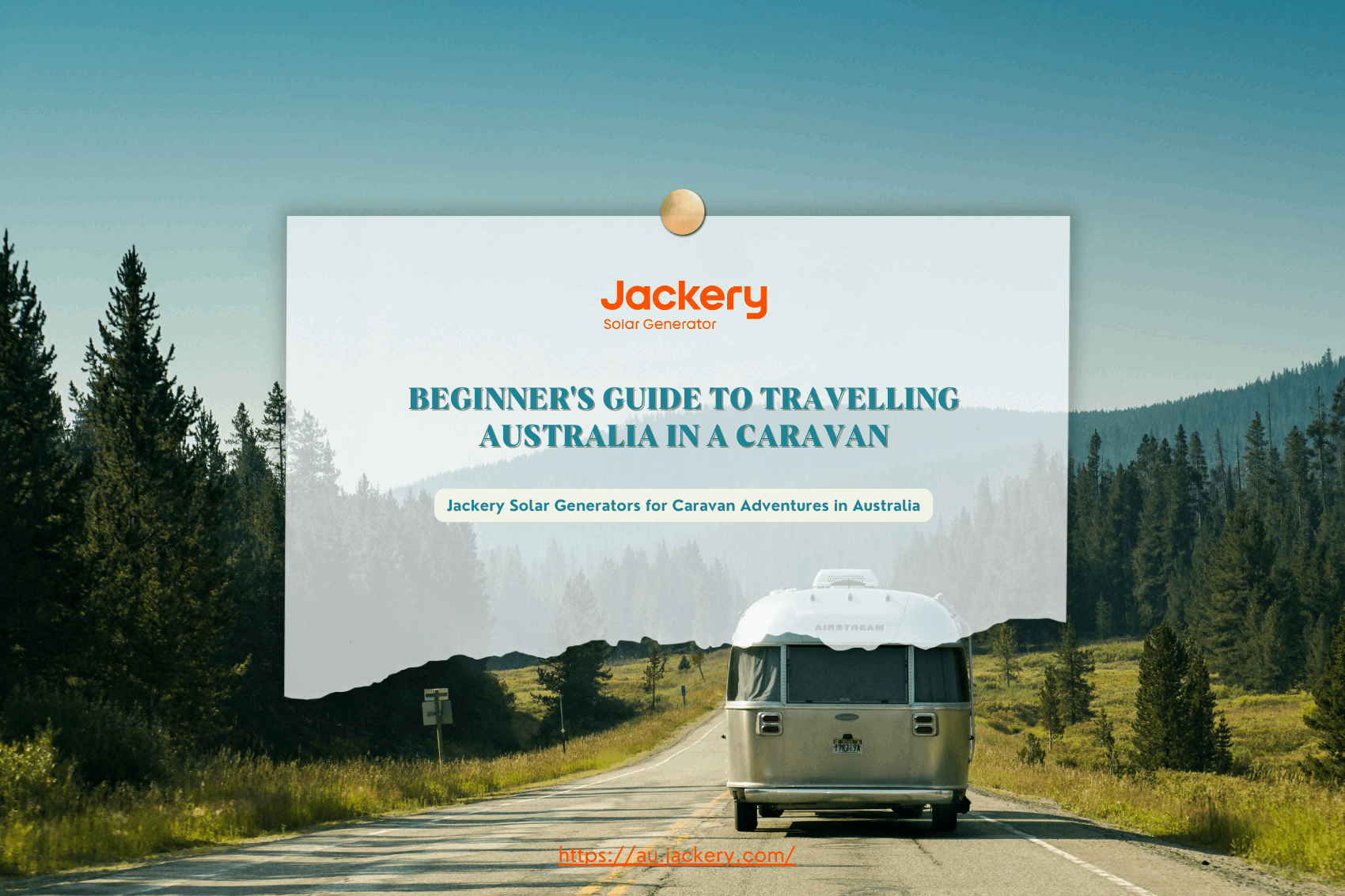|
Key Takeaways: |
|
- Most Australian caravans, including fixed external features, are 2.3 to 2.5 metres wide. - The legal maximum width for caravans in Australia is 2.5 metres, regulated by the NHVR. - Accurate measurements should be taken regularly, especially after modifications or additions. - Parking considerations are crucial—wide vans need more clearance and can face challenges in suburban areas. - Staying within legal width limits ensures safety, insurance compliance, and stress-free travel across Australia. - We highly recommend Jackery Explorer 1000 v2 as the portable solar power solution to power your caravan appliances in your vehicle or outdoors. |
How Wide Is a Caravan?
The width of each caravan is distinct from one another. In most cases, however, the width of the caravans is typically between 2.2 and 2.3 meters. Reflectors, mirrors, signalling devices, and other additional accessories are not allowed within the maximum width limit of 2.5 meters, including the awning and wheel guards.
In Australia, a typical caravan is between 2.3 and 2.5 meters wide, while most are closer to the 2.4 to 2.5-metre range to maximum interior living space without going over the allowed limits. Wheel arches, fixed awnings, grab grips, and lights are external features contributing to this breadth. Caravans typically have 2.2 to 2.3 metres of proper width inside, which makes space for amenities such as a dining area, kitchen bench, central passage, and sleeping.
Many caravan aficionados observe that vans that are 2.5 meters wide feel much more spacious inside without being unduly large to tow, whereas anything smaller than 2.3 meters can start to feel claustrophobic, particularly for extended travel or family use. According to blogs and forums, the width of a caravan should be chosen based on its intended usage. For instance, smaller caravans are better suited for off-road or isolated travel, whereas narrower roads are typical. At the same time, full-width vans are better for comfort and longer stays in caravan parks.
How Wide Can It Be?
According to rules from the National Heavy Vehicle Regulator (NHVR) and the Vehicle Standards Bulletin 1 (VSB1), the maximum allowable width for a caravan in Australia is 2.5 meters, and this regulation is applicable in all states and territories.
All fixed components, such as lights, reflectors, external pipes, and permanently installed awnings, are included in this permissible width; however, accessories that are detachable or foldable, such as towing mirrors or slide-out sections (when retracted during transit), are not. This restriction is in place to provide safe travel on common Australian highways, particularly in bridges, tunnels, and small lanes.
Overcoming this width can result in safety risks, insurance complexities, and legal problems, especially when passing other cars or negotiating curving country roads. Numerous caravan websites emphasise how crucial it is to double-check measurements following any do-it-yourself additions or modifications because even little adjustments like an upgraded side light or thicker bumper could cause the width to exceed the allowable limit. A safe and hassle-free trip throughout Australia's diverse geography depends on compliance, which goes beyond simply avoiding fines.
|
|
Caravan Width |
|
Include |
Wheel Guards Awning Accessories Rear Bumper Bar |
|
Does Not Include |
Rear Vision Mirrors Anti-Skid Devices Indicators, Signaling Lights, Reflectors Curtain-Side Devices |
Australia Caravan Width Comparison
|
Manufacturer |
Caravan Travel Width (including Awning) |
|
Avan |
2,390mm |
|
Avida RV |
2,495mm |
|
Carrera Caravans |
2,450mm |
|
Cedar Caravans |
2,500mm |
|
Concept Caravans |
2,450mm |
|
Condor Caravans |
2,400mm |
|
Century Trailers |
2,270mm |
|
Design RV |
2,450mm |
|
Euro Caravans |
2,050mm |
|
Fortitude Caravans |
2,450mm |
|
Goldstream RV |
2,560mm |
|
Golf Caravans |
2,450mm |
|
Jayco |
2,470mm |
|
K9 Vans |
2,170mm |
|
Legend Caravans |
2,500mm |
|
Lotus Caravans |
2,500mm |
|
Mars Campers |
2,300mm |
|
Mountain Trail RV |
2,495mm |
|
New Age Caravans |
2,500mm |
|
Paramount Caravans |
2,450mm |
|
Royal Flair |
2,285mm |
|
Salute Caravans |
2,350 |
|
Zone RV |
2,500 |
(Data Source: My Rig Adventure)
Why Caravan Size Matters?
The comfort, usefulness, and general enjoyment of your trip are all impacted by the size of your caravan. The appropriate size is crucial, regardless of whether you travel alone, with a spouse, or with a family. While wider choices like a toy haulier serve families and offer plenty of space for bikes and equipment or can be used as a huge family van, a micro caravan is best suited for single travellers.
The van's length, weight, and height will affect the caravanning experience and the number of people staying there. The caravan's ease of driving, manoeuvring, and parking will depend on its length. A shorter caravan might be better for drivers on gazetted dirt roads because they are simpler to manoeuvre. A high caravan will be less stable in windy situations, and weight will impact driving comfort, fuel efficiency, and even towing capacity.

According to Australian vehicle rules, a caravan's width across the body cannot exceed 2.5 meters. Wheel guards must be included in this size; however, side-mounted lamps, rearview mirrors, and signalling devices are not.
If you decide on a caravan that is longer than seven meters, you should consider where it will be kept when not in use. Although there are off-site caravan storage facilities, most individuals keep their caravans in their driveway or garage.
What Do You Need to Consider When Deciding On The Width of Your Caravan?
When deciding on the width of your caravan, consider manoeuvrability, storage space, towing stability, weight, and cost. By considering these aspects, you can make an informed decision that meets your travel needs and tastes.
1. Maneuverability
A caravan's width can have a considerable impact on its ability to manoeuvre on the road. A larger caravan may be more challenging to navigate through narrow streets or tight corners. Before making a decision, examine the areas you plan to visit and whether a narrower caravan might better suit your vacation needs.
2. Storage Space
The quantity of storage space within a caravan is directly proportional to its width. A larger caravan typically has more room for storage cupboards, culinary appliances, and living rooms. However, keep in mind that a larger caravan may restrict access to specific campgrounds or make parking difficult in small locations.
3. Towing Stability
The width of a caravan might impact its towing stability. A larger caravan may be more susceptible to swaying or being influenced by crosswinds. If you intend to tow your caravan frequently, select a width that provides maximum stability while minimising the danger of towing-related concerns.
4. Weight and Fuel Efficiency
A larger caravan is typically heavier, which can reduce your vehicle's fuel economy. Consider the weight implications of a larger caravan and verify that your towing vehicle can handle it without sacrificing fuel economy or putting too much pressure on the engine.
5. Cost Considerations
Wider caravans may often be more expensive than narrower ones. This is owing to the additional materials and construction necessary to meet the larger width. Before making a final selection, consider your budget and if the benefits of a larger caravan outweigh the increased expense.
How To Measure A Caravan Width?
Measuring a caravan is a common question that is thought to be a difficult task. However, it's straightforward; just grab a piece of tape with hook-like ends and begin recording measurements.

How to Measure Caravan Width?
Accuracy is crucial when measuring caravan width. Knowing your caravan's breadth is important whether buying one, finding storage, or planning a trip. Here are some recommendations for accurate measurements:
Utilise a Tape Measure: If you want to determine the width of your caravan, you should get a reliable tape measure! Check whether it is sufficiently lengthy to take up the complete width without stretching it.
Measure from the Outside: To begin, stand outside the caravan. Find the broadest points, usually the body's outermost edges, including mirrors and awnings.
Measure at Various Heights: Caravan widths might fluctuate depending on the height, particularly if air conditioners or other roof-mounted devices are present. To accommodate for any discrepancies, measure vertically at different positions.
Take Several Measurements: Take measurements at various locations throughout the caravan's width to guarantee accuracy. This will help you spot any anomalies or disparities.
Examine the Manufacturer's Specifications: In addition to taking measurements of your caravan, it's a good idea to consult the manufacturer's specs. The owner's manual or the manufacturer's website will frequently have these. They offer the official measurements and can be used as a point of reference.
Awnings and Folded Mirrors: If your caravan has retractable awnings or foldable mirrors, measure the width with them completely extended and retracted. As a result, you will better understand the overall breadth of various situations.
Caravan Width: Safety and Legal Considerations
When considering the width of a caravan in Australia, it's essential to understand both the typical dimensions and the legal limitations to ensure safe and lawful travel.

Typical Caravan Width in Australia
Most caravans in Australia are between 2.3 and 2.5 metres wide, which includes external fixed features such as wheel arches, awnings, and bumpers. The internal living space is typically slightly narrower, measuring around 2.2 to 2.3 metres, depending on insulation and wall thickness.
Narrower caravans, closer to 2.3 metres wide, are ideal for off-road or remote travel, where tighter tracks and rough terrain are more common. Full-width caravans, nearing the 2.5-metre limit, offer more spacious interiors and are popular for long-term stays in caravan parks or holiday destinations.
Legal Width Limit
The maximum legal width for a caravan in Australia is 2.5 metres (2,500 mm).
This regulation is enforced nationally by the National Heavy Vehicle Regulator (NHVR) and is outlined in the Vehicle Standards Bulletin 1 (VSB1).
The width measurement includes all fixed external components, such as lights, reflectors, awnings, handles, and structural attachments.
However, it does not include removable or foldable items like towing mirrors or slide-out sections, provided they are retracted during transport.
Safety & Compliance Considerations
Exceeding the legal width can lead to serious consequences, including fines, roadworthiness failures, or even being denied insurance coverage in the event of an incident.
A too wide caravan can pose safety risks, especially when driving on narrow rural roads or passing other vehicles in tight spaces.
It is important to double-check the caravan's measurements after any DIY upgrades or modifications, as even small changes - such as adding a wider bumper or upgraded lights - can push the total width beyond the legal limit.
Staying within legal width limits ensures road safety, maintains compliance across all Australian states and territories, and provides peace of mind while travelling.
Caravan Accessories and Their Impact on Dimensions
One of the best things about purchasing a new van is outfitting your caravan with everything you need for pleasant travel. Remember that roof-mounted equipment, bike racks, and awnings are accessories that can affect the size of your caravan, particularly its width and height. These accessories improve functionality, but they also have an impact on travel and storage issues.

Fixed Awnings and Side-Mounted Accessories: These are considered part of the caravan's permitted width if they are permanently connected and do not fold in while in transit. This implies they must be included when measuring to ensure compliance with Australia's 2.5-metre width restriction.
Slide-Out Sections: Slide-out sections can add important internal room when parked, but they must be fully retracted when the caravan is in motion so they do not contribute to the allowed transport width. However, all slide-outs must fit neatly within the authorised envelope when retracted.
Roof-Mounted Items: Roof-mounted devices such as air conditioners, solar panels, and satellite dishes might have an impact on the overall height of the caravan, which is limited to 4.3 metres in Australia. Exceeding this limit may result in difficulties under bridges or electricity lines.
Rear-Mounted Accessories: Rear-mounted attachments, such as spare wheels, bike racks, and toolboxes, can increase the total length of the caravan. While these additions are acceptable if they do not exceed the 12.5-metre caravan length restriction (or 19 meters when paired with the tow vehicle), they must be fastened appropriately and not obscure lights or number plates.
Other Accessories: Accessories such as stone guards, exterior plumbing connections, and extended drawbars can all contribute to the caravan's footprint. These are frequently disregarded but must be measured to determine legal compliance.
Important to Note: It's also crucial to remember that for the following modifications, it's advisable to check with a qualified installer or weighbridge for approval, as DIY installations or aftermarket additions might not have the original manufacturer's approval. To guarantee both legal compliance and towing safety, it is a good idea to regularly check the caravan's dimensions after adding or changing accessories, particularly before lengthy excursions or interstate travel.
Jackery Explorer 1000 v2 for Caravans
In recent years, caravan and RV holidays have become increasingly popular in Australia, particularly among families and young couples. These vehicles are one of the most convenient ways to tour the lovely country and are among Australia's most popular recreational vehicles.
A portable power station in Australia is a battery-operated inverter generator designed to connect directly to your solar panel system. It facilitates the conversion of DC to AC while simultaneously storing the generated electricity. Consequently, you can maintain a reliable power supply irrespective of your location. This device is also an excellent solution for transitioning to off-grid usage, particularly when travelling in remote areas.

Portable power stations are designed to be moved easily. You can use them in your caravan or even transport them to different locations. So, here we recommend Jackery Explorer 1000 v2.
Portable Powerhouse for Your Caravan: With a robust 1500W AC output and a surge peak of 3000W, this device can support various outdoor appliances, including portable speakers, projectors, cameras, phones, etc. The device includes 100W PD Fast USB-C charging (both input and output) for efficient recharging, possesses a substantial 1070Wh capacity, and is designed in a compact size to optimise space utilisation.
Easy to Carry: The Jackery Explorer 1000 v2 Portable Power Station is engineered for mobile energy solutions. Weighing about 23.8 lbs and equipped with a compact foldable handle, it is more lightweight and portable than conventional items. Besides, it is 20% smaller and 10% lighter than mainstream products. This powerhouse conveniently fits into the back compartment for effortless storage, guaranteeing you are never without power.
More Than Fast Charging: Jackery's upgraded Power Station exhibits a 50% enhancement in power output compared to the previous Explorer 1000 model, with an AC output of 1500W. It charges 7.5 times faster, achieving a full charge in just 59 min through the Jackery App. The LiFePO4 battery exhibits a lifespan four times greater than conventional batteries, supporting 4,000 life cycles while maintaining over 70% of its capacity.
Safer to Use: The Jackery Explorer 1000 v2 offers rapid charging capabilities, achieving a full charge in 60 minutes when utilised with the accompanying application. The ChargeShield 2.0 system provides 62 types of safety protection and is CE-certified. It features comprehensive fire and shock resistance to ensure quality and optimal safety.
|
|
Explorer 1000 v2 |
|
Capacity |
1070Wh |
|
Battery Cell |
LiFePO4 |
|
Weight |
10.8 kg |
|
Size |
32.7 x 22.4 x 24.7 cm |
|
Recharge Life Cycle |
4000 cycles to 70%+ capacity |
|
APP Control |
Yes |
|
UPS |
UPS≤20ms |
|
Working Temperature |
Charge Temperature: 0~45C Discharge Temperature:-10~45C |
|
Quiet Level |
Less than 22dB |
|
Safety |
ChargeShield 2.0 10-Year Lifespan UL94 Fire Resistance Rating IEC60068 Shock-Resistant Level |
|
Output Ports |
2*AC Output: 230V, 50Hz, 1500W Rated, 3000W Surge Peak |
|
1*USB-A: 18W Max,5-6V⎓ 3A,6-9V⎓ 2A,9-12V⎓ 1.5A |
|
|
USB-C1: 30W Max, 5V⎓3A, 9V⎓3A, 12V⎓2.5A, 15V⎓2A, 20V⎓1.5A |
|
|
USB-C2: 100W Max, 5V⎓3A, 9V⎓3A,12V⎓3A, 15V ⎓3A, 20⎓5A |
|
|
Carport: 12V⎓10A Max |
|
|
Recharging Methods |
Explorer 1000 v2 + 2*SolarSaga 100W: 7.5H |
|
Emergency Charging via App: 1H |
|
|
AC Adapter: 1.7H |
|
|
Car Adapter: 12H |
Caravan Parking Considerations
Width is vital in parking, particularly for caravans near the legal maximum of 2.5 metres. Parking a wide trailer necessitates greater lateral clearance, which can be difficult in narrow driveways, residential streets, or congested caravan park sites.

Home: When parking at home, make sure your driveway or garage is wide enough to allow for easy manoeuvrability and the opening of side doors or hatches. Don't forget to leave enough space for decorations like side awnings or door stairs.
Public Parking Areas: Public parking lots and rest spots are not typically built to handle large caravans. To avoid fines or damage, always check parking restrictions and signage. When stopping in town or on the side of the road, look for designated long vehicle bays.
Caravan Parks: When booking caravan parks, make sure to advise the site manager of your van's exact dimensions. Some sites may have trees, fences, or garden margins that limit turning space or setup area.
Impact of Accessories: Consider how accessories affect your parking footprint. For example, rear-mounted bike racks or spare tyres increase length, whereas slide-out parts require lateral space when parked. Always leave ample space between cars or stationary structures. Corner jacks or stabilisers may protrude slightly beyond the vehicle's body, which can be overlooked while determining parking clearance. Ensure there is enough area to deploy them completely.
Other Considerations
Be aware of overhanging branches or low eaves, especially when backing into shady or undercover areas. Caravans with rooftop upgrades such as air conditioning or solar panels may be more susceptible to clearance concerns.
Check local council guidelines for storage in cities or suburbs; many municipalities prohibit long-term parking of trailers on the street or in front yards. You may need permission to store your caravan off-site.
When parking for prolonged periods of time, consider security and flat ground. Choose flat places for a safer setup, and look for soft terrain that may cause the caravan to sink over time. If you're reversing into a small place, employ a spotter or video system to avoid damage, and go slowly – even experienced drivers sometimes misjudge tight curves with large trailers.
With of Caravans FAQs
The following are the frequently asked questions about the width of caravans in Australia.
1. How wide is a caravan in Australia?
In Australia, caravans are typically 2.3 to 2.5 metres wide, with external features such as awnings, handles, and wheel arches. Most current caravans are designed close to the legal maximum width of 2.5 metres, which is set by the National Heavy Vehicle Regulator (NHVR) for road safety. This size compromises inside space and road safety, making it appropriate for short and long travels.
2. How wide are Jayco caravans?
Jayco caravans in Australia typically have a travel width of around 2.47 metres, which includes fixed elements such as awnings. For example, the Jayco Journey Outback 22ft-3 model measures 2.47 metres wide. This width is somewhat less than the national legal maximum of 2.5 metres, allowing for a large interior while being compatible with Australian road standards. It's worth noting that while the width is typically consistent among models, other parameters like length and height can vary depending on the model and setup.
3. What is the average size of a four-berth caravan?
Small and mini trailers are usually around 5 metres or shorter. Two-berth standard tourers, including the A-frame, typically measure 5.5m to 6.5m. Family four-berth tourers typically measure 6.0m to 7.5m, but larger five- and six-berths frequently exceed 8m.
4. How wide is a caravan in meters?
A caravan in Australia is approximately 2.3 to 2.5 metres wide. Most modern caravans are designed close to the legal limit width of 2.5 metres, with fixed external features such as awnings, lights, and handles.
5. How wide is a 17ft caravan?
In Australia, a 17-foot caravan typically measures between 2.4 and 2.5 metres wide, depending on the manufacturer and model. This width includes external features such as awnings and wheel guards. While the length (17 feet, or around 5.2 metres) relates to the van's body, the width is often within the conventional range, near the legal limit width of 2.5 metres to provide comfortable internal room while staying road legal.
Final Thoughts
Choosing the appropriate caravan width is more than just a technical standard; it is about assuring safety, comfort, and functionality. While the legal maximum width in Australia is 2.5 metres, the ideal width for your needs is determined by your lifestyle, towing experience, and trip intentions. Whether you're traversing rural backroads or relaxing in a large caravan park, understanding caravan dimensions - and how accessories may alter them - can lead to a more comfortable and stress-free trip

